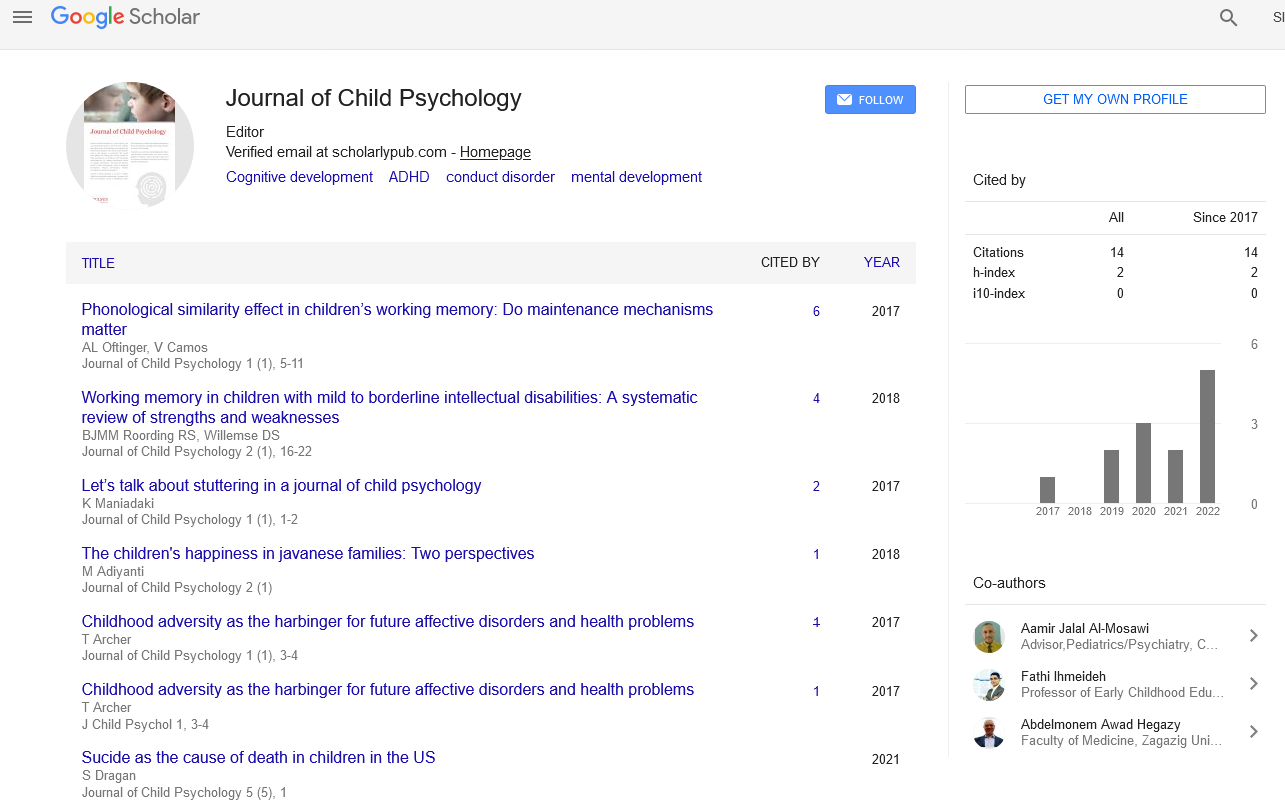A brief study on history of childhood amnesia..
Received: 05-Nov-2021 Accepted Date: Nov 12, 2021; Published: 26-Nov-2021
This open-access article is distributed under the terms of the Creative Commons Attribution Non-Commercial License (CC BY-NC) (http://creativecommons.org/licenses/by-nc/4.0/), which permits reuse, distribution and reproduction of the article, provided that the original work is properly cited and the reuse is restricted to noncommercial purposes. For commercial reuse, contact reprints@pulsus.com
Introduction
Youth amnesia, also known as juvenile amnesia, is the inability of adults to recover long-term (recollections of events or circumstances) before the age of two to four years, as well as the period before the age of ten, during which a few more established adults have fewer recollections than might be expected given the passage of time. According to some research, children can remember events as early as the age of one, but that these memories may fade as they get older. When it comes to describing the onset of juvenile amnesia, most therapists disagree. It is sometimes referred to as the age at which a first memory can be retrieved. This usually happens when a child is three or four years old, although it can happen at any age between two and seven years old for a couple.
In her essay “An inquiry of individual brain research,” published in the American Journal of Psychology in 1895, analyst Caroline Miles described youth amnesia for the first time. Henri and Henri disseminated a survey five years later, revealing that the majority of respondents’ earliest memories occurred between the ages of two and four. In his book Adolescence: Its Psychology and Its Relationships to Physiology, Anthropology, Sociology, Sex, Crime, Religion, and Education, published in 1904, G. Stanley Hall noted the anomaly. Sigmund Freud presented one of the most well-known and controversial pictures and explanations of youth amnesia in 1910. He claimed that early life events were curtailed due to their inappropriately sexual nature, based on psychoanalytic theory. He said that adolescence, or juvenile amnesia, was a precursor to his adult patients’ ‘insane amnesia,’ or restriction. Freud had his patients go over their oldest memories, and he saw that they had trouble recalling events from when they were six to eight years old. In his Three Essays on the Theory of Sexuality, Freud coined the term “puerile” or “youth amnesia” to describe this feature. Campbell and Spear published a basic study on teenage amnesia in Psychological Sciences in 1972, summarising the research conducted to understand this phenomenon from neurological and social perspectives in both human and animal models.
Recollections that are both open and closed
Many factors influence how much of a person’s youth memories they can recall, including their mood at the time of the recollected event, their age at the time of the recollected event, and their age when they are contacted to review an early memory. Despite the fact that many people believe that not revisiting a favourite memory means they have forgotten about it, there is a contrast between accessibility and openness. The likelihood that memory is perfect and in-memory stockpiling is referred to as memory accessibility. The second in time that an individual attempts to evaluate a memory determines its availability. As a result, prompts may have an impact on which recollections are open at any given time, even if there are many more available recollections that are not used. According to another study, people’s earliest memories begin at the age of three or four years. Usher and Neisser noted that a certain events, such as the arrival of a relative and a planned hospitalisation, can be remembered with ease whether they occurred at age 2 or not. However, the fragments of such recollections gleaned throughout their investigation may not be indicative of confirmed long-term memory. An alternative hypothesis is that these seeming recalls are the result of ballpark estimates, general information on what has most likely occurred, or outside data obtained after the age of two.





